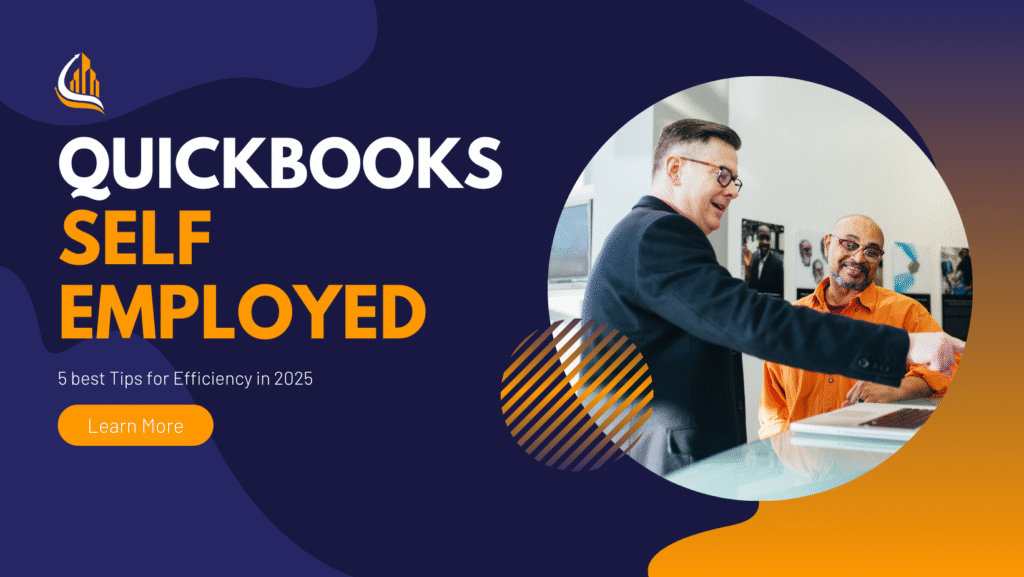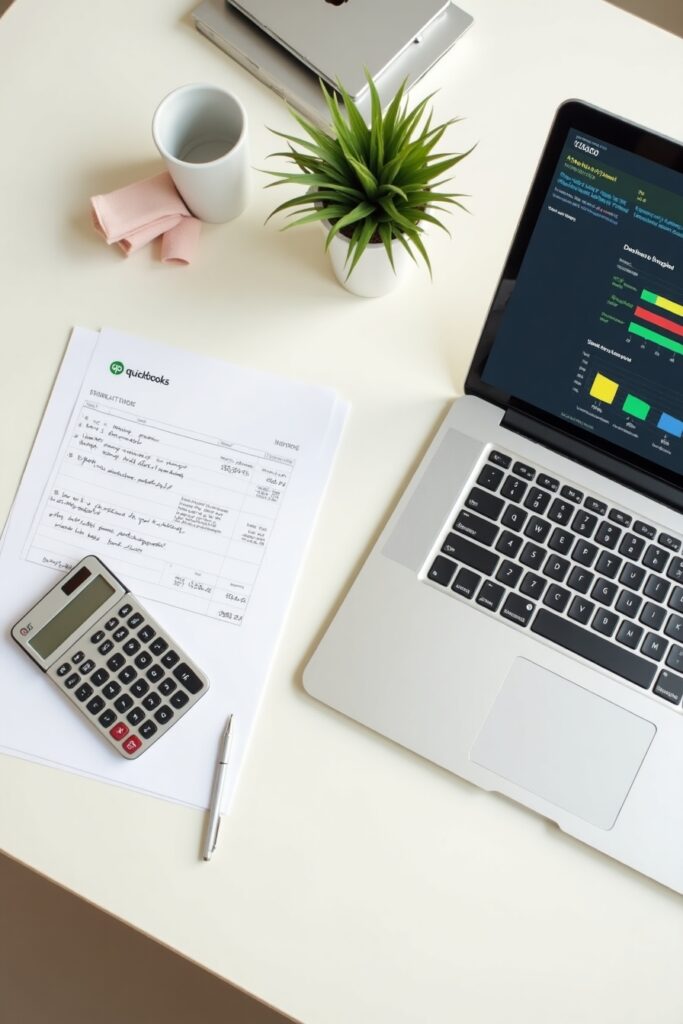I Getting Started with QuickBooks Self Employed
A. Overview of QuickBooks Self Employed
QuickBooks Self Employed is a user-friendly accounting software tailored specifically for freelancers and small business owners. It simplifies the financial management process, allowing users to track income, expenses, and even prepare for tax season with ease.
Key features and benefits include:
- Seamless invoicing and tracking of customer payments.
- Expense tracking for better financial insights.
- Built-in tax estimation and reporting tools.
Understanding your needs before setup is crucial. Take some time to reflect on your financial management requirements. Are you often on the road? Do you handle a lot of different clients? These questions will help guide your setup process.

B. Setting Up Your Account
Setting up your QuickBooks Self Employed account is straightforward. Here’s a step-by-step guide:
- Visit the QuickBooks website and click “Sign Up.”
- Choose a plan that aligns with your business needs. Consider the type of work you do and select the option that offers the features you need.
- Follow the prompts to input your personal and business information. Accuracy is key—this data will be essential for correct financial tracking.
A little patience during this setup phase pays off in smoother operation later.
C. Navigating the Dashboard
Once your account is set up, you’ll find yourself on the dashboard, which is your command center.
Key areas to focus on:
- Income Overview: See how much you’ve earned at a glance.
- Expense Tracking: Quickly view your spending to manage your budget.
- Tax Estimator: A helpful section that can keep you prepared for tax season.
You can customize the dashboard to highlight what matters most to you. Consider rearranging sections or removing distractions to create a user-friendly space.
II. Managing Invoices and Expenses
A. Creating and Sending Invoices
Generating invoices is a breeze in QuickBooks Self Employed. Here’s how to do it:
- On the dashboard, click on “Invoices” and select “Create Invoice.”
- Fill in client details, services provided, and payment terms.
- Customize the invoice template to match your branding, making it professional and visually appealing.
For recurring clients, setting up recurring invoices can save time and ensure you never miss a billing cycle.
B. Tracking Expenses Efficiently
Efficient expense tracking is vital for freelancers. Here are some effective strategies:
- Input expenses as soon as they occur to avoid missing anything.
- Use the receipt capture feature to snap pictures of receipts and store them digitally. This helps keep everything organized.
- Regularly categorize your expenses for easy tracking and better insights into your spending habits.
By forming a habit of recording expenses, you’ll simplify your financial management.

C. Connecting Bank Accounts
Linking your bank account to QuickBooks is a smart way to save time:
- Navigate to “Connected Accounts” in your dashboard.
- Follow the prompts to securely connect your bank account.
- After connecting, monitor your transactions and ensure they sync correctly.
If discrepancies arise, don’t panic! QuickBooks offers tools to help you reconcile these issues easily.
If you’re managing team communication alongside your finances, you might also want to check out our guide on Slack Pricing.
III. Maximizing Tax Deductions
A. Understanding Tax Deductions Available to You
Freelancers and contractors can often benefit from a variety of deductions. Some common ones include:
- Home office expenses
- Business travel costs
- Software subscriptions related to your work
It’s vital to keep tax records well organized. Utilize QuickBooks to track eligible expenses throughout the year, so you’re never scrambling during tax season.
B. Using Tax Tools in QuickBooks
QuickBooks includes several built-in tax tools that will support you:
- Set up estimated tax payments so you’re prepared when tax season arrives.
- Generate tax reports easily at year-end, allowing for an organized filing process.
These tools can save you precious time and help avoid potential tax complications.

C. Preparing for Tax Season
As tax season approaches, here are some tips:
- Document your income and deductions regularly instead of waiting until the last minute.
- Use QuickBooks to pull all relevant financial information, making tax filing much smoother.
- If you’re unsure about anything, consider consulting a tax professional for guidance.
Preparation is key; the earlier you start organizing your documents, the less stress you’ll face.
IV. Streamlining Workflows and Time Management
A. Integrating QuickBooks with Other Tools
Integrations can greatly enhance your efficiency. Consider linking QuickBooks with other essential tools such as payment processors or customer relationship management software.
- Check the QuickBooks app store for integration options.
- Follow the steps to connect them seamlessly.
These integrations can automate repetitive tasks and save you a lot of time.
B. Setting Reminders and Notifications
Leveraging the reminder features in QuickBooks is a great way to stay on top of deadlines:
- Set reminders for invoices due or project deadlines.
- Customize notification settings to alert you about what’s most critical.
Prioritizing tasks by urgency can help enhance your productivity.
C. Establishing a Routine for Regular Updates
To maintain clean records, establish a consistent routine:
- Allocate time daily or weekly for updating your QuickBooks data.
- Consider leveraging automation tools to minimize manual entry where possible.
By consistently visiting QuickBooks, you can ensure that nothing slips through the cracks.

V. Enhancing Your Knowledge and Skills
A. Utilizing QuickBooks Resources
QuickBooks offers a wealth of resources to help you grow:
- Explore official tutorials and webinars for deeper learning.
- Participate in community forums to share insights and tips with other users.
These resources can help you boost your knowledge and become more confident in using the software.
B. Participating in Training Sessions
Ongoing education is essential for effective software use:
- Look for local or online QuickBooks training sessions and workshops.
- Engage fully during training to get the most value.
This is not just an investment in your skills but also in your business’s success.
C. Staying Updated with New Features
QuickBooks regularly updates its features. Stay informed by:
- Following QuickBooks newsletters or their official blog.
- Setting aside some time from your schedule to explore new features as they’re released.
Trying out new features can lead to discovering tools that better suit your workflow.
For task management, don’t miss our Trello Login tutorial to stay organized in 2025.

Conclusion
To sum it up, maximizing your efficiency with QuickBooks Self Employed in 2025 involves understanding the software’s fundamentals, mastering expense and invoice management, taking full advantage of tax tools, streamlining workflows, and continuously improving your skills. Embrace these tips, and you’ll find that managing your freelance business becomes not just more manageable but also more enjoyable.
FAQs
What is QuickBooks Self Employed primarily used for?
QuickBooks Self Employed is designed to help freelancers and small business owners manage income, expenses, and tax preparations effectively.
How can I track my business mileage in QuickBooks self employed?
QuickBooks Self Employed offers a mileage tracking feature where you can log your miles and categorize them for tax deductions.
Are there any additional costs associated with using QuickBooks Self Employed?
While the software has a monthly subscription fee, you may incur additional costs for certain integrations or premium features.
Can I use QuickBooks Self Employed if I operate a partnership?
QuickBooks Self Employed is geared towards individual freelancers. For partnerships, consider using QuickBooks Online.
How do I migrate my data from another accounting software to QuickBooks?
QuickBooks provides tools and guidance for importing data from other accounting software, streamlining the transition process.

2 Responses